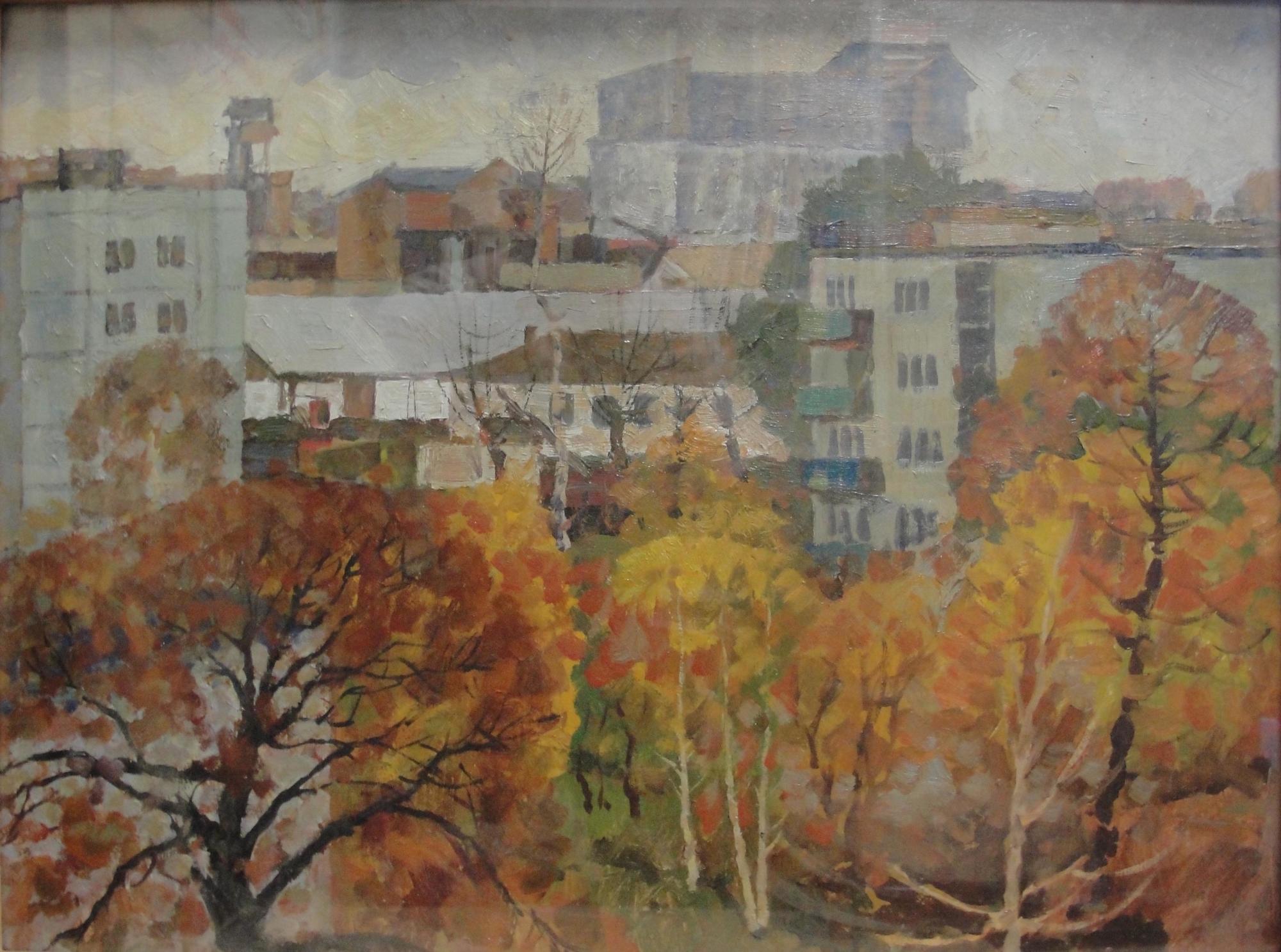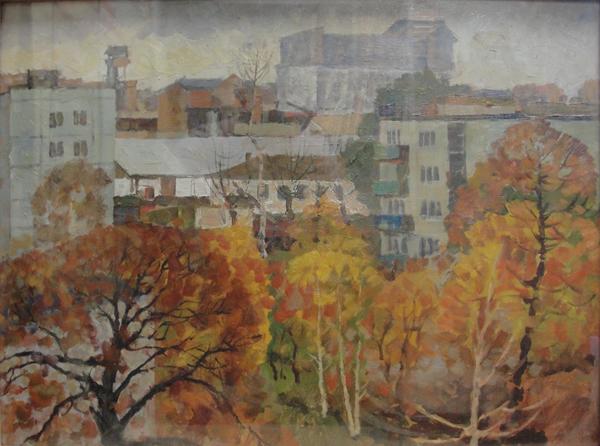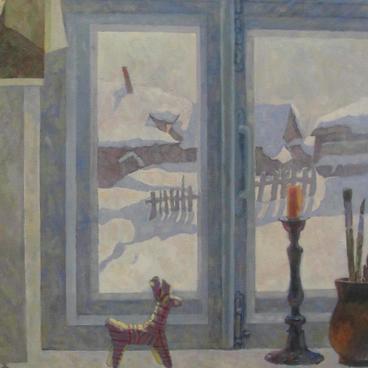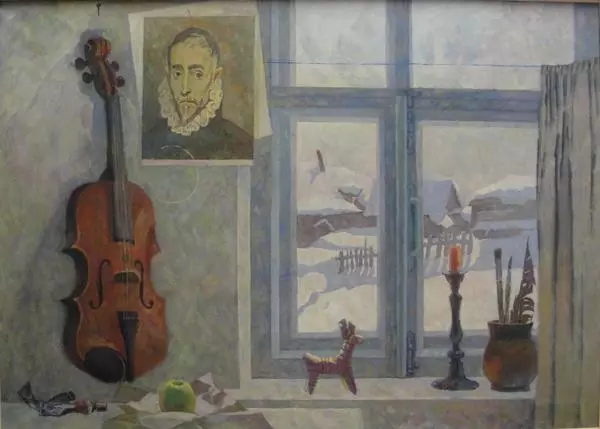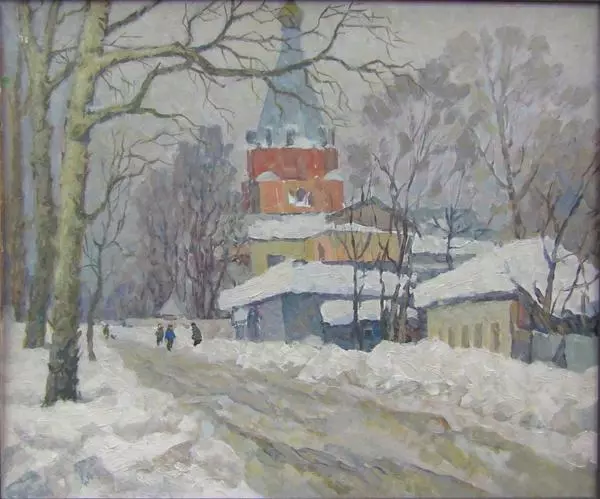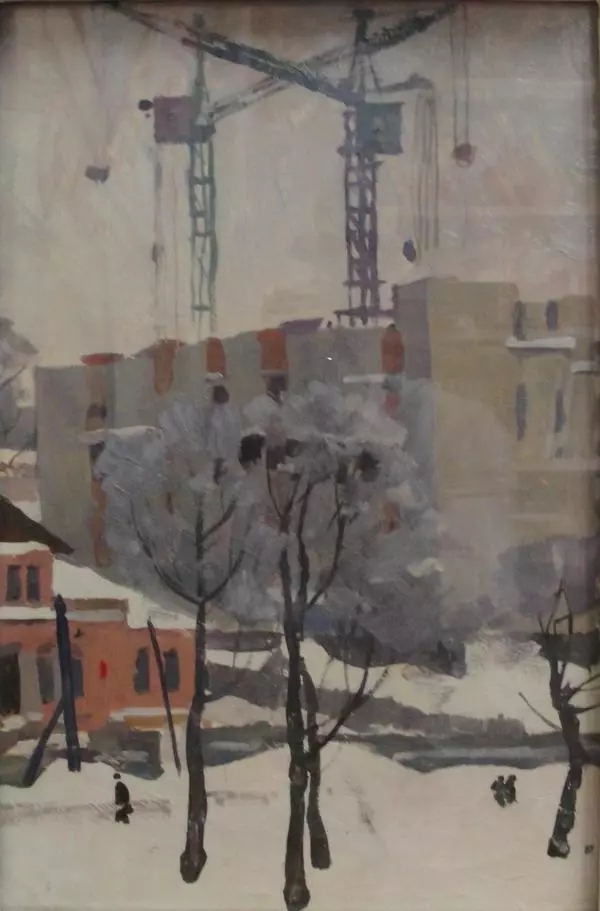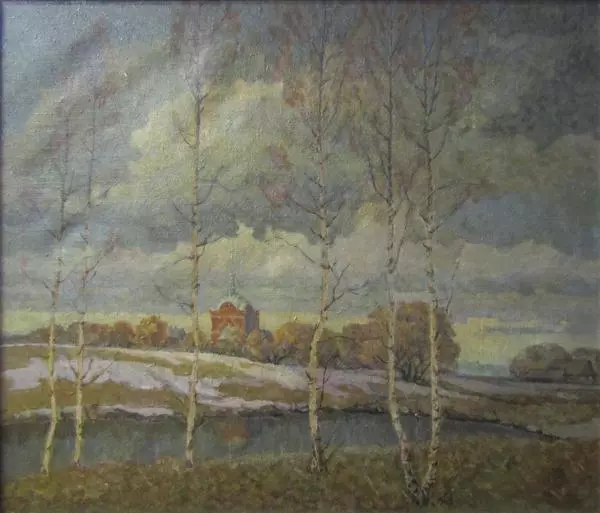Felix Assorov’s painting features an autumn cityscape of Uzlovaya in the Tula Region. The sun does not any more throw golden light on the tops of the trees still wearing their copper and vermilion attire. The alarming ashen grey sky forebodes an imminent change in the weather. The lush crowns of the trees at the forefront overshadow the dull fadedness of standard blocks of flats of the Soviet period. In the background, in the lilac-grey haze of the ending day, the building of the Uzlovaya grain elevator is towering.
Uzlovaya formed in the mid 19th century as an industrial settlement and a railway junction. It only turned into a city before the Great Patriotic War. “Khrushchyovka style” five-storey buildings are interspersed with small prewar structures. The Uzlovaya elevator is blended into the background, with its blurred outlines dissolving in the evening shades.
In the tragic year of 1941, when the Germans approached the city, one of the largest in the Tula Region grain storages was set on fire to prevent the grain falling into the hands of occupants. The country had already started starving, and Uzlovaya residents rushed to the elevator to collect some grain. According to the eyewitnesses, not so many of them managed to do it. People were driven away from the already burning building. Those who were late cried because they had no food for their children. Now, the elevator is still there reminding the old inhabitants of the hardships of the war period.
The buildings and structures shown on the canvas complete the autumn cityscape. The painting is dominated by the trees adorned with the lush leafage. The artist has skillfully conveyed the mood of an autumn afternoon and the nostalgic sadness accompanying the last sunny days. The city is frozen in anticipation of the moment when the golden fairy-tale will give way to the rain and rough weather. The ringing silence splashed in the cooling space sounds as a prelude to the tocsin of blistering cold. Looking at the canvas, the spectator feels the transparency and resonance of the air already turning humid, hears the rustle of the softly falling leaves.
Felix I. Assorov was born in the village of Kodushenka in 1937. For Felix Assorov, the Tula Region is his small motherland. The future artist’s talent showed itself early and, after finishing the secondary school, he entered one of the country’s best specialized educational institutions — the Moscow Regional Pedagogical Art College of the Memory of 1905.
After graduation from the college, Felix Assorov returned to his small motherland — the Tula Region. The artist associated his life with Uzlovaya for a long time: he managed a fine art studio in the city House of Pioneers, led the team of artists of the “Uzlovskugol” Workers’ Supply Department. In the 90s, Assorov became one of the founders of the children’s art school where he gave painting lessons for 13 years.
Felix Assorov is a member of the Union of Artists, participant of mobile art exhibitions of different levels. The largest collection of portraits and landscapes created by the artist is kept in the Uzlovsky Museum of Fine Arts and Local History.
Uzlovaya formed in the mid 19th century as an industrial settlement and a railway junction. It only turned into a city before the Great Patriotic War. “Khrushchyovka style” five-storey buildings are interspersed with small prewar structures. The Uzlovaya elevator is blended into the background, with its blurred outlines dissolving in the evening shades.
In the tragic year of 1941, when the Germans approached the city, one of the largest in the Tula Region grain storages was set on fire to prevent the grain falling into the hands of occupants. The country had already started starving, and Uzlovaya residents rushed to the elevator to collect some grain. According to the eyewitnesses, not so many of them managed to do it. People were driven away from the already burning building. Those who were late cried because they had no food for their children. Now, the elevator is still there reminding the old inhabitants of the hardships of the war period.
The buildings and structures shown on the canvas complete the autumn cityscape. The painting is dominated by the trees adorned with the lush leafage. The artist has skillfully conveyed the mood of an autumn afternoon and the nostalgic sadness accompanying the last sunny days. The city is frozen in anticipation of the moment when the golden fairy-tale will give way to the rain and rough weather. The ringing silence splashed in the cooling space sounds as a prelude to the tocsin of blistering cold. Looking at the canvas, the spectator feels the transparency and resonance of the air already turning humid, hears the rustle of the softly falling leaves.
Felix I. Assorov was born in the village of Kodushenka in 1937. For Felix Assorov, the Tula Region is his small motherland. The future artist’s talent showed itself early and, after finishing the secondary school, he entered one of the country’s best specialized educational institutions — the Moscow Regional Pedagogical Art College of the Memory of 1905.
After graduation from the college, Felix Assorov returned to his small motherland — the Tula Region. The artist associated his life with Uzlovaya for a long time: he managed a fine art studio in the city House of Pioneers, led the team of artists of the “Uzlovskugol” Workers’ Supply Department. In the 90s, Assorov became one of the founders of the children’s art school where he gave painting lessons for 13 years.
Felix Assorov is a member of the Union of Artists, participant of mobile art exhibitions of different levels. The largest collection of portraits and landscapes created by the artist is kept in the Uzlovsky Museum of Fine Arts and Local History.
